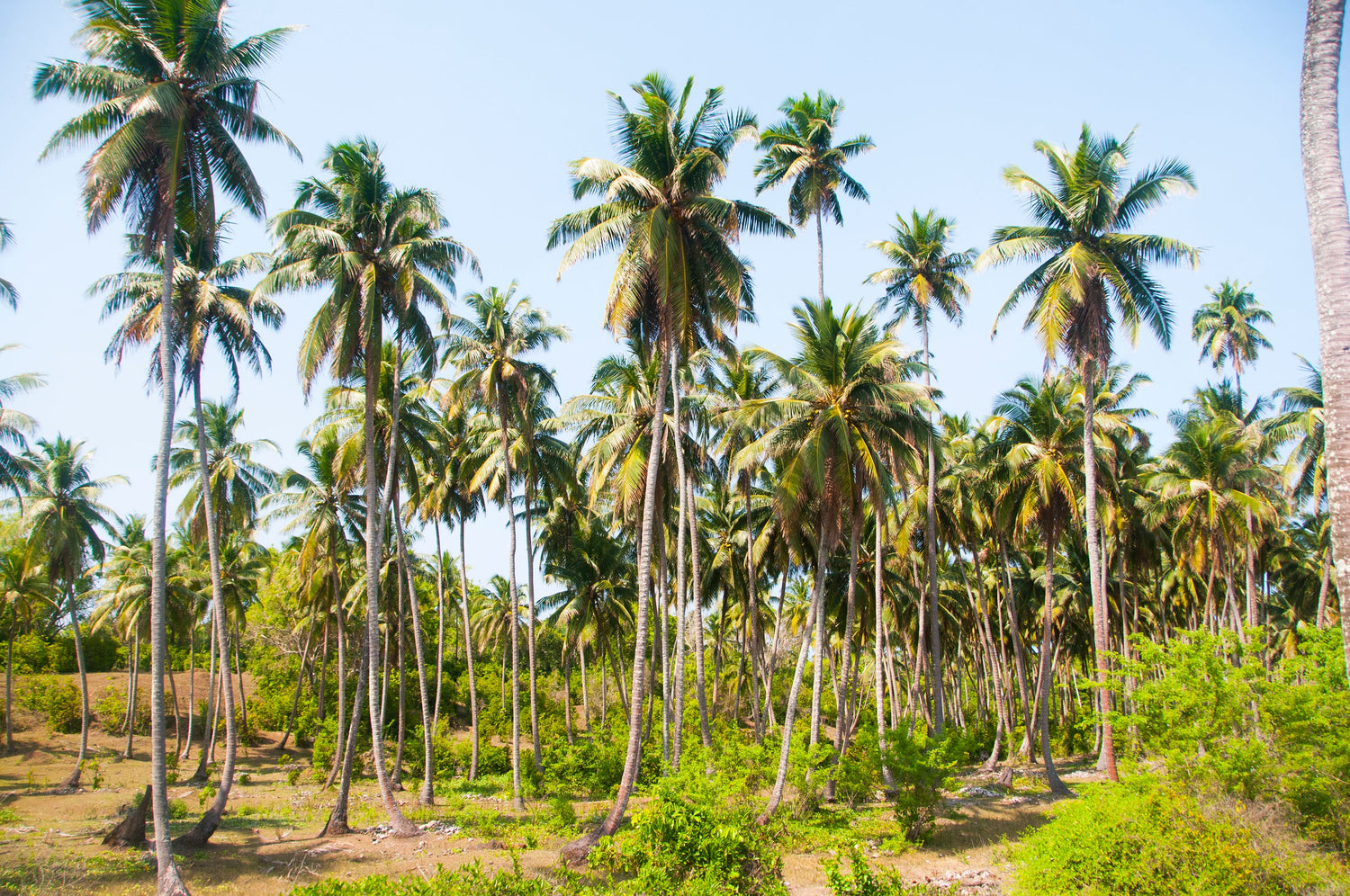Tall Varieties
Characteristics
• Long lived palm living generally to an age of about 80 to 100 years
• Palms thrive well under different soil conditions varying from littoral sands to red loams and laterites.
• Palms grow well up to an altitude of 3,000 ft. above the sea level. It is fairly resistant to diseases and pests.
• The tree attains a height of about 15m to 18m or more
• It begins to bear in about 8 to 10 years after planting
• The nut is medium to big in size varying in shape from spheroid to linear-oblong and with colors varying from green, yellow and orange to shades of brown.
• About 6,000 nuts yield a ton of copra
List of Tall Varieties
• West coast tall
• East coast tall
• Chandrakalpa or Lakshadweep ordinary (LCT)
• Philippines Ordinary (Kerachandra)
• VPM – 3 (Andaman Ordinary)
• Aliyar Nagar 1
• Tiptur Tall
• Kera sagara (Seychelles)
• Suitable varieties for Tamil Nadu: West Coast Tall, Chandrakalpa or Lakshadweep ordinary (LCT), VPM – 3 (Andaman Ordinary), East coast tall ,Aliyar Nagar 1, Kera Chandra (Philippines Ordinary)
Dwarf Varieties
Characteristics
• The dwarf coconut is small in stature (5-7 m) and commences bearing earlier than the tall variety
• Dwarf coconut palms flower as early as the third year after planting and come to regular bearing in the ninth year.
• The average life span is 40-50 years.
• Dwarf or short variety which producing green, orange and yellow nuts.
• Susceptible to drought.
• Nuts are small in size and ovoid or round in shape
• Nut weighs about 3 oz (85 gm) with 65 per cent oil content.
List of Dwarf Varieties
• Chowghat Orange Dwarf (COD)
• Chowghat Green Dwarf (CGD)
Suitable varieties for Tamil Nadu: Chowghat Orange Dwarf (COD), Chowghat Green Dwarf (CGD)
Hybrids
Hybrids are the intervarietal crosses of two morphological forms of coconut. They show earliness in flowering and give increased yield, higher quantity and better quality of copra and oil when compared to the parents. When the tall is used as female they are called T*D hybrid while the reciprocal is known as D*T hybrid. Hybrids perform well under good management conditions including nutrient management and irrigation.
Characteristics
• Hybrids are the intervarietal crosses between the two morphological forms of coconut.
• They exhibit earliness in flowering, increased nut yield, higher copra production and give better quality copra and oil as compared to the parents.
• Hybrids are produced in two ways, with tall as female parent and dwarf as male parent (Tall x Dwarf) or dwarf as female parent and tall as male parent (Dwarf x Tall).
• Besides intervarietal hybrids like Tall x Tall and Dwarf x Dwarf are also produced.
List of Hybrid Varieties
• Kerasankara (WCT x COD)
• Chandrasankara (COD x WCT)
• Chandralaksha (LCT x COD)
• Keraganga (WCT x GBGD)
• Lakshaganga (LCT x GBGD)
• Anandaganga (ADOT x GBGD)
• Kerasree (WCT x MYD)
• Kerasoubhagya (WCT x SSAT)
• VHC 1 (ECT x MGD)
• VHC 2 (ECT x MYD)
• VHC 3 (ECT x MOD)
Suitable varieties for Tamil Nadu: Kerasankara (WCT x COD), Chandrasankara (COD x WCT), Kerasoubhagya (WCT x SSAT), VHC 1(ECT x MGD), VHC 2(ECT x MYD), VHC 3(ECT x MOD)
Suitable Varieties for Kerala: Kerasankara(WCT x COD), Chandrasankara (COD x WCT), Chandralaksha(LCT x COD), Keraganga (WCT x GBGD), Lakshaganga (LCT x GBGD), Anandaganga(ADOT x GBGD), Kerasree (WCT x MYD), Kerasoubhagya (WCT x SSAT)
Suitable varieties for Karnataka: Kerasankara (WCT x COD), Chandrasankara (COD x WCT), Chandralaksha (LCT x COD), Kerasoubhagya (WCT x SSAT)
